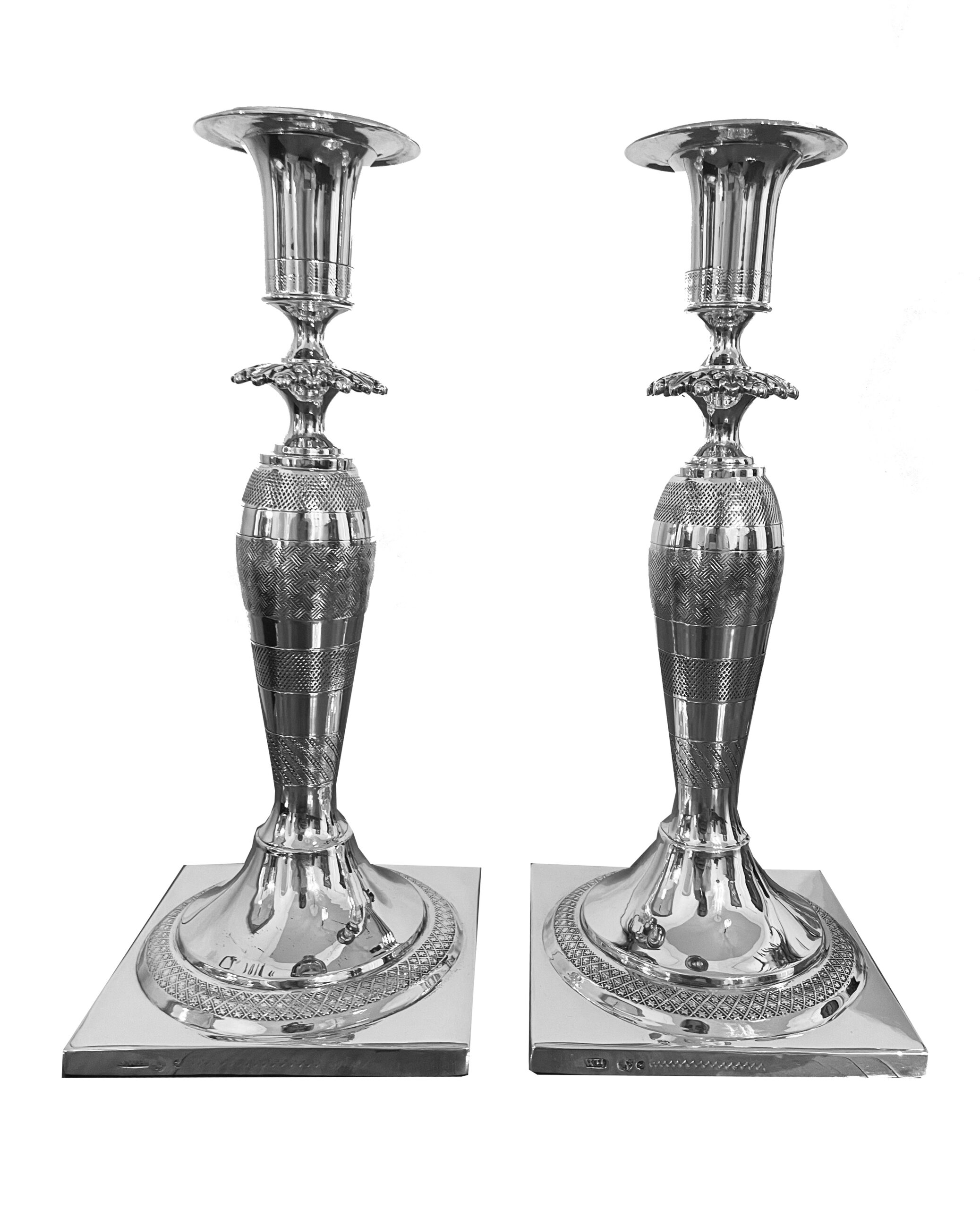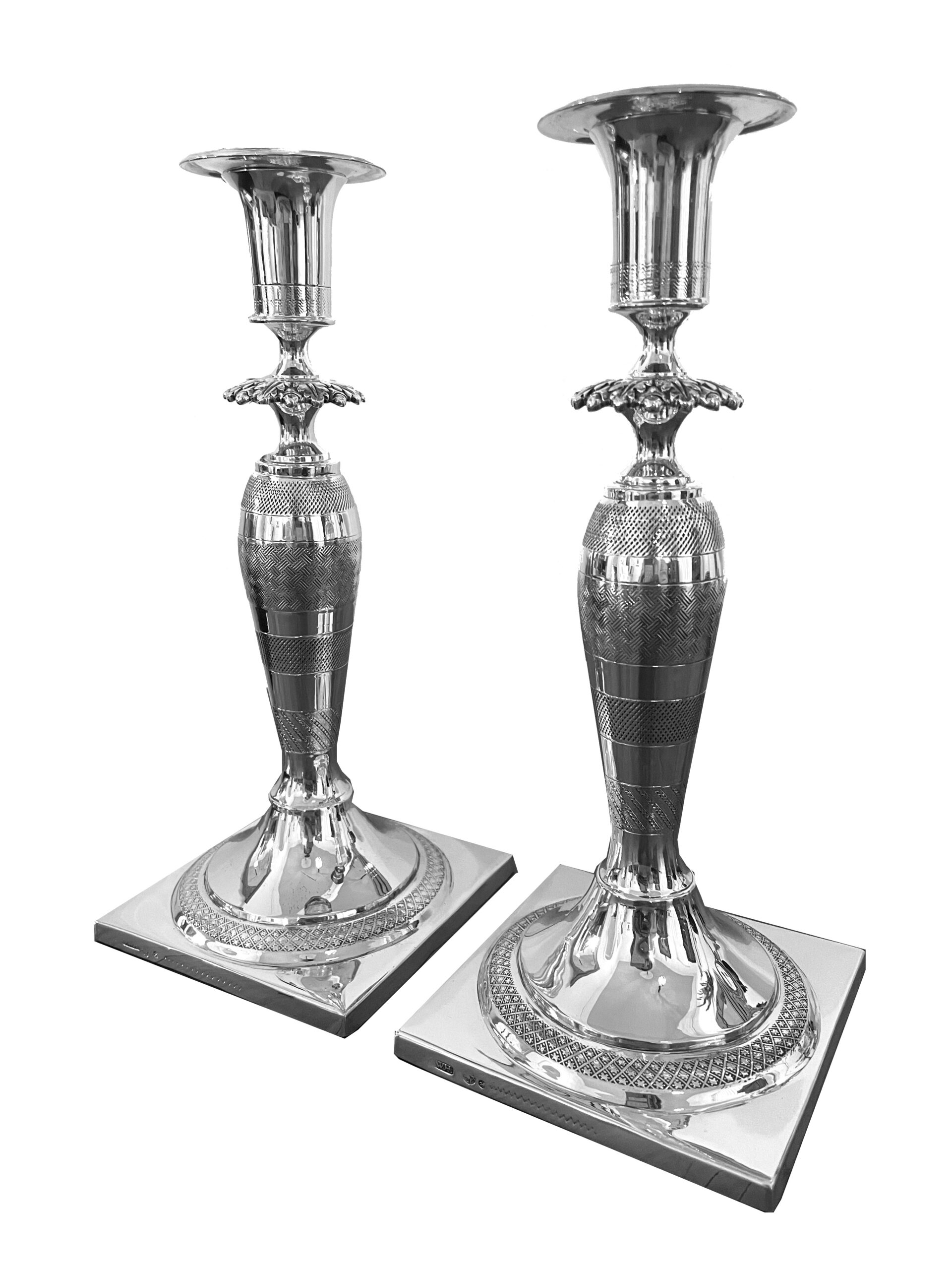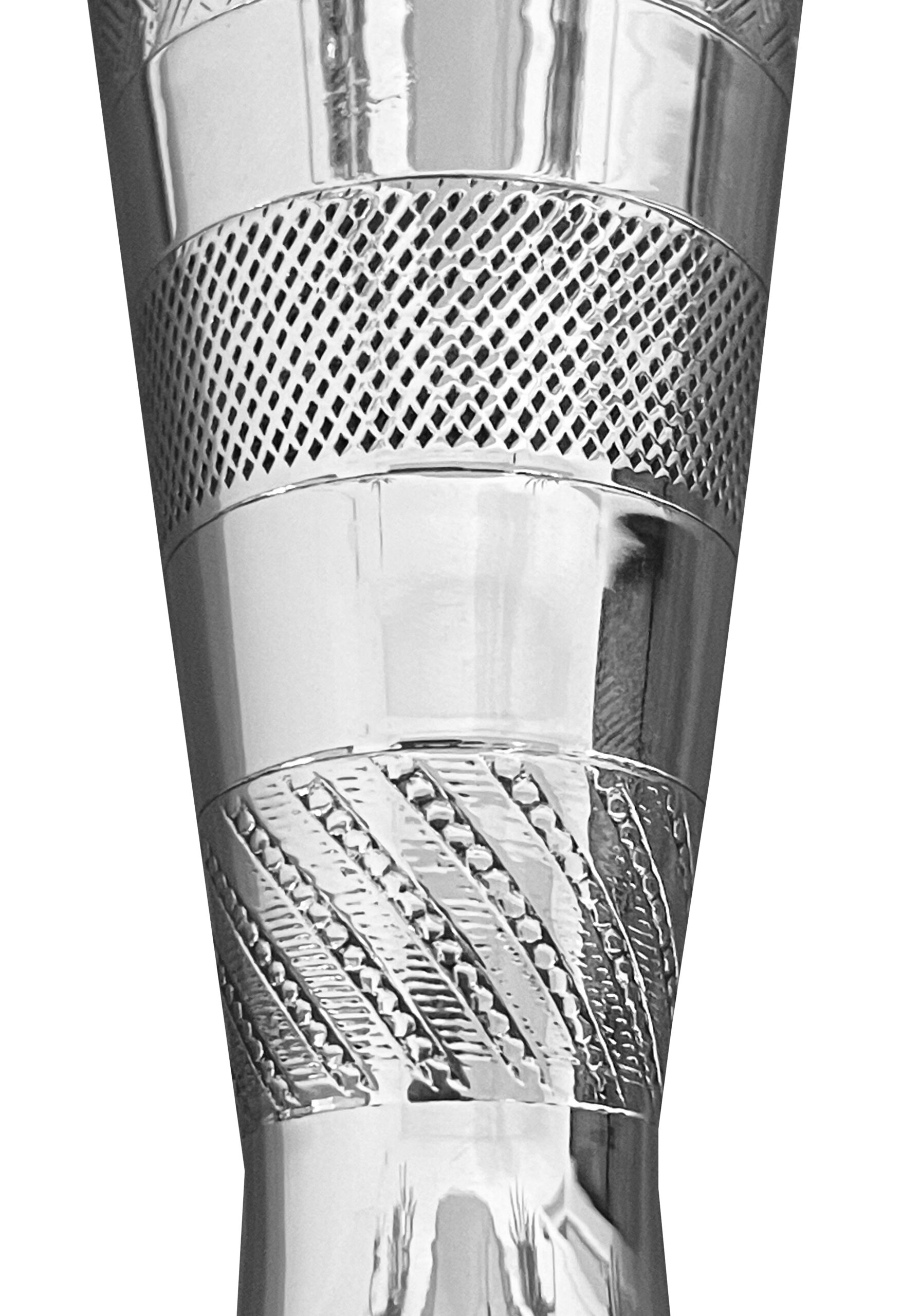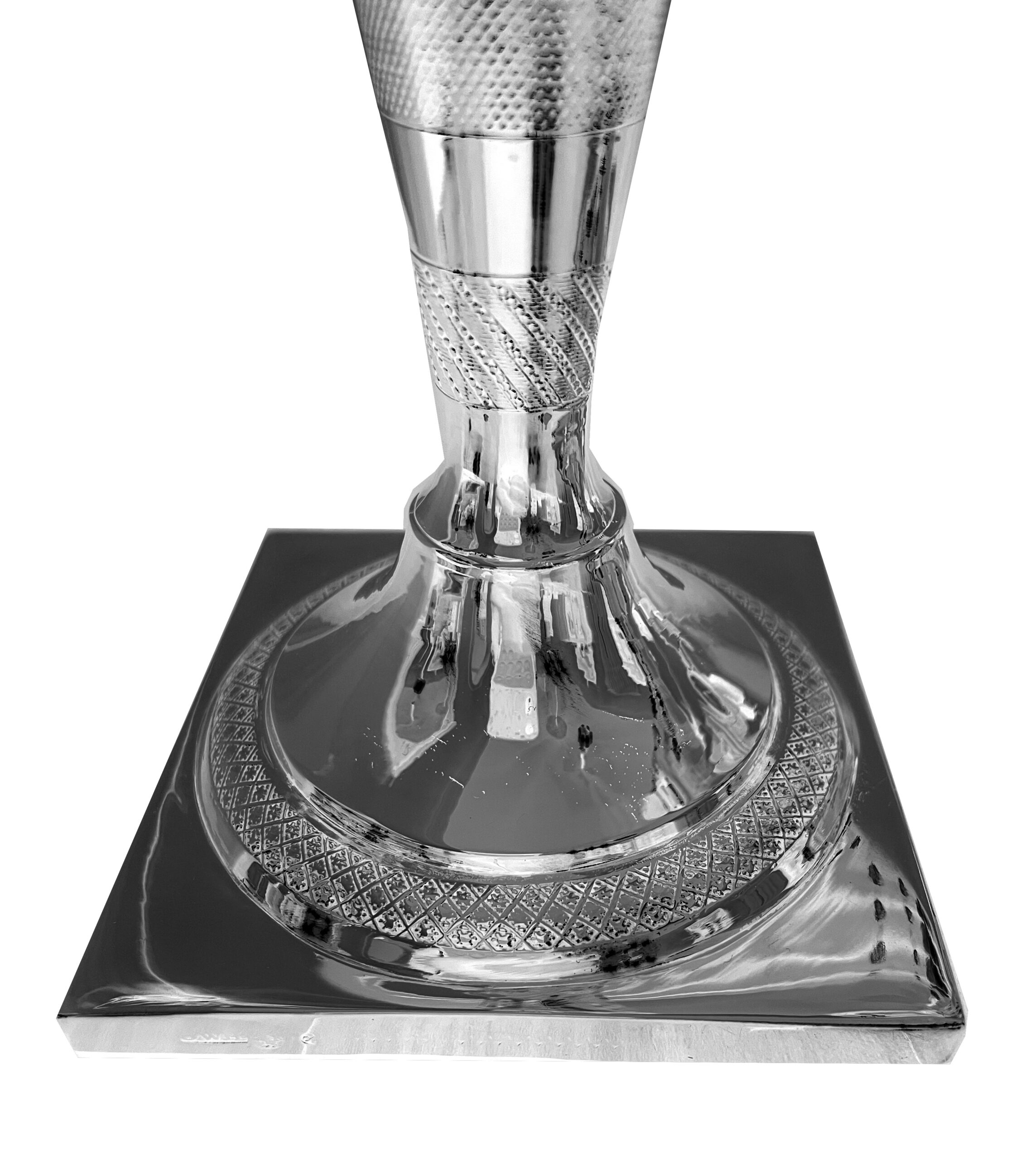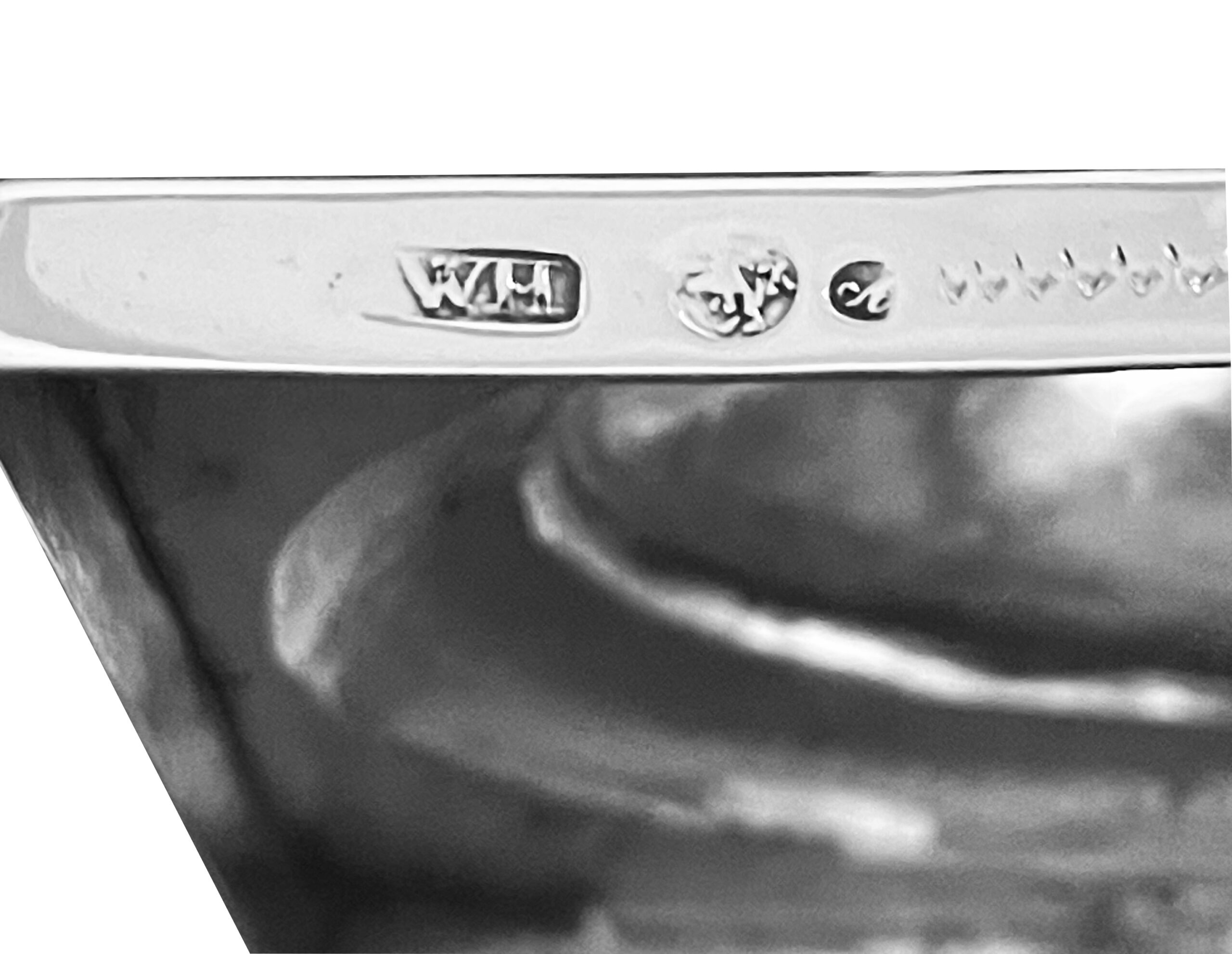Biedermeier Silver candlestick, sold
Nr. 2648 |
Silver candlestick
Berlin around 1830.
800 silver. Square base and slightly bulbous shaft with palmette frieze and shade. The conical spouts are removable. Finely embossed, hollow candlesticks with rich geometric engraving. Marks: BZ Berlin with second drawing master Andreack for 1819 – 1842, MZ Johann George Wilhelm Heinicke (1816 – 1855, Scheffler No. 14, 18, 324), tremolo engraving.
Berlin, Johann George Wilhelm Heinicke, around 1830.
H.: 28 cm | Diameter: 9.5 cm | Weight: 576 g
No. 2648
Candlesticks
The silver candlesticks described come from the Biedermeier period, more precisely from Berlin around 1830. They are made of 800 silver, a silver alloy that consists of 80% pure silver, and are characterized by high-quality craftsmanship.
Design and features: – Shape and style:
The candlestick has a square base and a slightly bulbous shaft. These shapes reflect the clear and simple style of the Biedermeier, which is characterized by simple but elegant shapes.
Decorative elements: The candlesticks are decorated with a palmette frieze, which is a typical classicist ornament. Palmettes are stylized leaf shapes reminiscent of fans and were popular in ancient Greece. A palmette shade complements the design.
Spouts: The conical spouts that form the top of the candlesticks are removable, indicating practical aspects and care needs.
Technique: The candlestick is finely embossed and hollowed out, which indicates a masterful silversmith’s art. In addition, the candlesticks are richly decorated with geometric engravings, which gives the object a certain delicacy and complexity.
Marks and signatures: BZ Berlin: This mark indicates that the candlestick was made in Berlin. – Master signer Andreack: The second master signer (responsible for minting city marks) was active from 1819 to 1842.
Master mark Johann George Wilhelm Heinicke: This silversmith worked in Berlin from 1816 to 1855. His marks are documented in relevant directories, such as Scheffler’s, under numbers 14, 18 and 324.
Tremolier engraving:
A tremolo engraving is a fine, jagged engraving that was often used to mark silver objects or to confirm their authenticity.
Conclusion: These silver candlesticks by Johann George Wilhelm Heinicke represent the high art of silversmithing in Berlin during the Biedermeier period. The combination of simple shapes and rich engravings as well as the use of high-quality silver make them valuable and aesthetically pleasing works of art of the era.
To pay homage to this era, a valuable place for the candlesticks is this Biedermeier half-cabinet and ad this to this Biedermeier cherry tree cabinet.
Biedermeier at RSA Wiesbaden
You can find a wide selection of Biedermeier furniture and decorative art pieces.
Regine Schmitz-Avila – your Biedermeier specialist for cabinets, tables, and chests.
